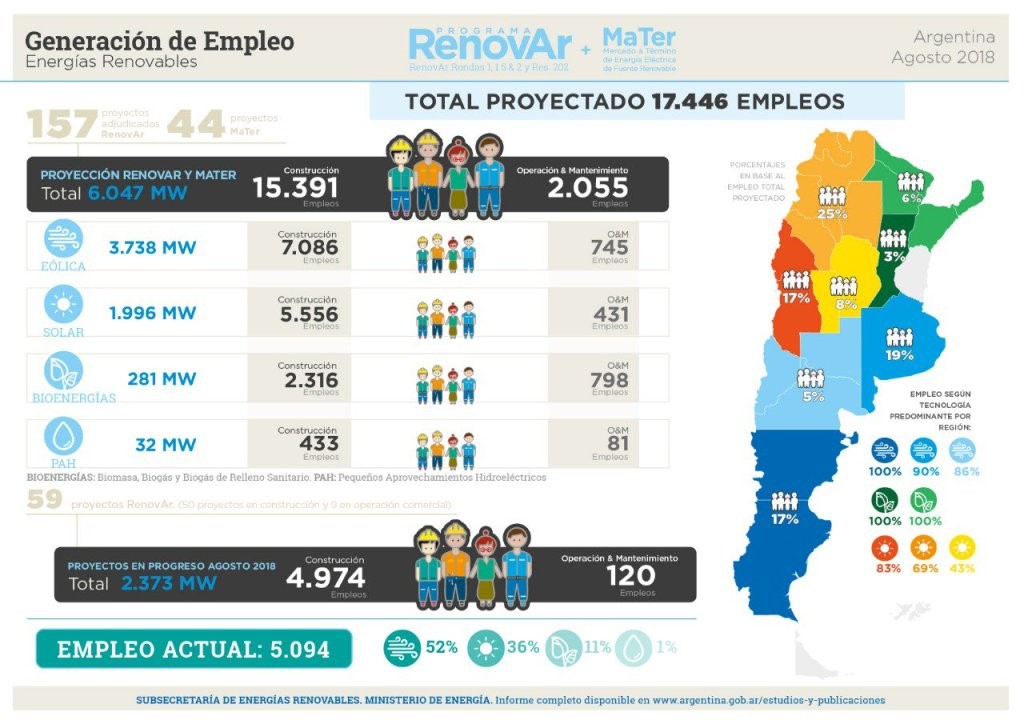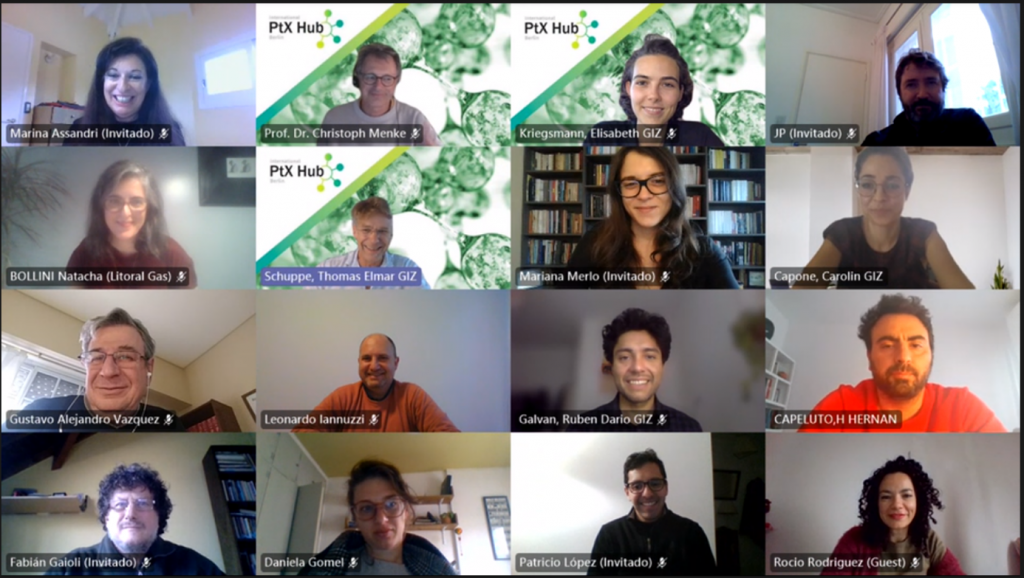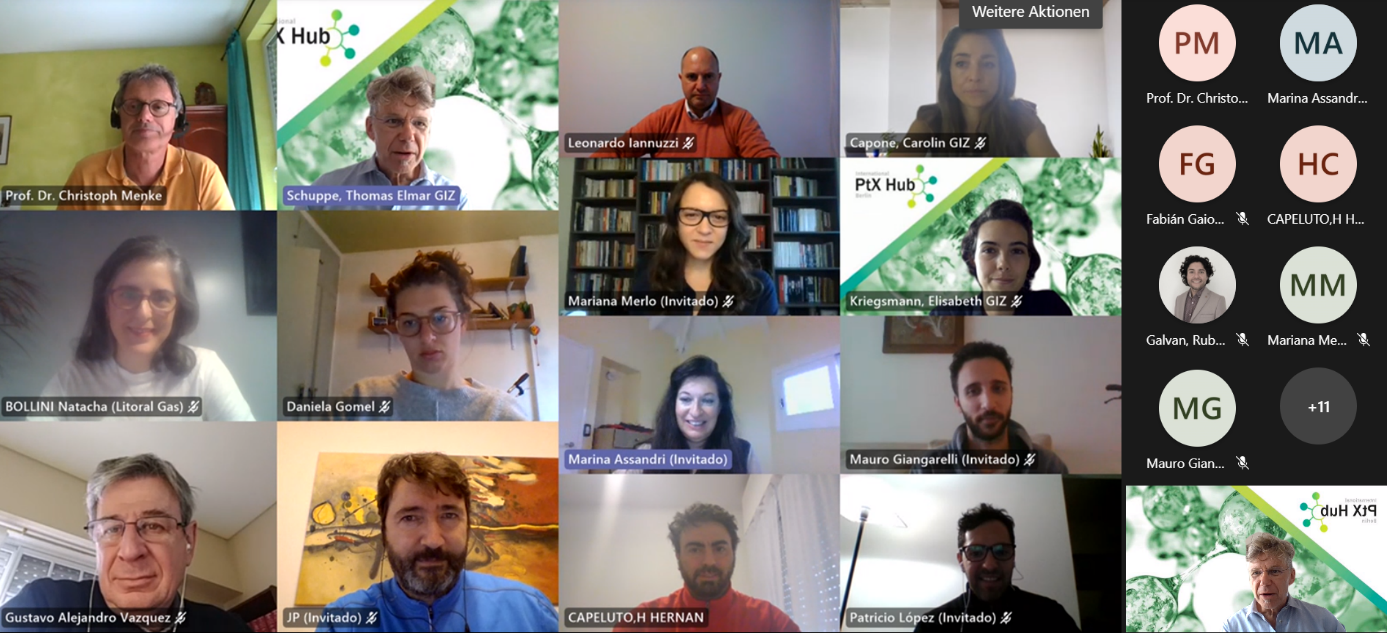Published on August 2, 2021
Argentina shows the third highest technical Power-to-X (PtX) potential in the world with respect to land availability and access to freshwater. This shows the recently published Power-to-X-Atlas of the German Fraunhofer IEE Institute (in German). Argentina also scores with its vast availability of renewable energy sources, especially wind and sun power.
Already since 2008, the green hydrogen project Hychico of the Argentinian Oil and Gas Company Capex S.A. demonstrates the technical feasibility of water electrolysis in Argentina, powered by wind turbines (operated by Enercon) since 2011.
During the 2021 forum “Towards a National Hydrogen 2030 Strategy”, the current president Alberto Fernández announced the elaboration of a national hydrogen strategy by the end of 2021. Fernández recognised green hydrogen as a fundamental element to diversify the energy mix. Green hydrogen can also contribute to Argentina fulfilling its international pledge regarding climate change. Argentina aims to limit its greenhouse gas emissions to 313 MtCO2e by 2030.
In recent years, Argentina’s government signed contracts for building up to 6.5 GW renewable energy capacity. Most of it is already operating, helping to make solar and wind the country’s cheapest non-subsidised energy sources. Renewables will soon make up almost 20 % of Argentina’s electricity generation. This is especially impressive considering the swift deployment of wind and solar capacity in the last years. The country increased its wind energy capacity from 227 MW to 2624 MW and solar energy capacity from 9 MW to 764 MW compared to 2017.

The government elected in 2015 aimed at diversifying the country’s energy mix and attracting international private investment to the power sector. This was a particularly difficult endeavour considering Argentina’s investment climate. Even though renewable energies are comparatively cheap in operation, they require high initial investment. The costs of capital are sensitive to i.e. interest rate or return rates which make them significant factors to consider when making initial investments. Argentina’s government managed to tackle these barriers by de-risking renewable energy projects in their country.
Currently, many countries in the region, such as Chile, Uruguay and Brazil are seeking to secure their position in the green hydrogen and PtX market. Argentina should be able get a foot in the game due to its abundance in wind and solar capacities, enabling it to produce large quantities of hydrogen at a low cost. This is especially the case in Patagonia. Due to its abundant potential for solar and wind power, Argentina can not only flexibly produce green hydrogen but also derivatives such as green ammonia with whichever source is most readily available.
The development of a green hydrogen economy in Argentina will contribute to achieving its national NDC goals and increasing the share of renewable energy in the country’s energy mix.
In addition, developing a green hydrogen market may provide a solution to social and economic concerns, such as the unequal development of cities and rural areas. As the highest solar radiation levels and wind resources are in the northwest and Patagonia respectively, industrial hubs could be built in these territories. In this case, a balance between the capital city and rural areas with respect to the creation of jobs could be achieved. In addition, the development towards an export market of green hydrogen would also positively affect the national balance of trade.
Looking at the country’s great opportunities, the interest in a Green Hydrogen and PtX Training facilitated by the International PtX Hub Berlin was strong. Representatives of the Ministry of Environment and Sustainable Development (Ministerio de Ambiente y Desarrollo Sostenible), the Energy Ministry with the Secretariat of Renewable Energies (Secretaría de Energías Renovables), the Secretariat of Energy Planning (Planeamiento Energético), the Ministry of Productive Development (Ministerio de Desarrollo Productivo), the Wildlife Foundation Fundación Vida Silvestre in cooperation with Agora Energiewende and Engie with Litoral Gas took part in the training consisting of three half-days from July 12 to 14. They extended their knowledge and discussed the global hydrogen market as well as national opportunities and obstacles for Argentina’s involvement in the market.

The country-tailored transfer workshop provided the participants with a status quo of current green hydrogen developments in Argentina. The presentation of the Institute of Industrial Technology, INTI, about the certification of hydrogen triggered an especially vivid discussion about the future chances of Argentinian green hydrogen on the international market with the right certification schemes.
Furthermore, the experts agreed that Argentina has the potential to become a low-carbon hydrogen exporter but can also defossilise its chemical industry and transport with locally produced green hydrogen. To achieve this, strong policies, investment in infrastructure and clearly assigned responsibilities are needed.
Contributor to this article is Elisabeth Kriegsmann.
